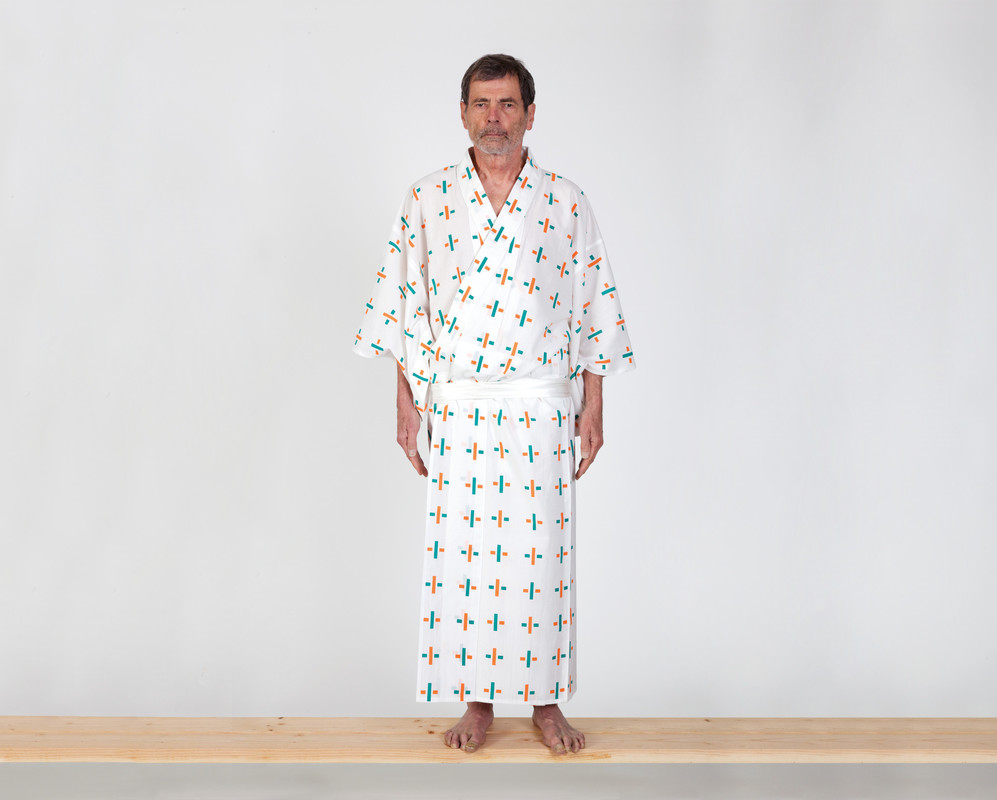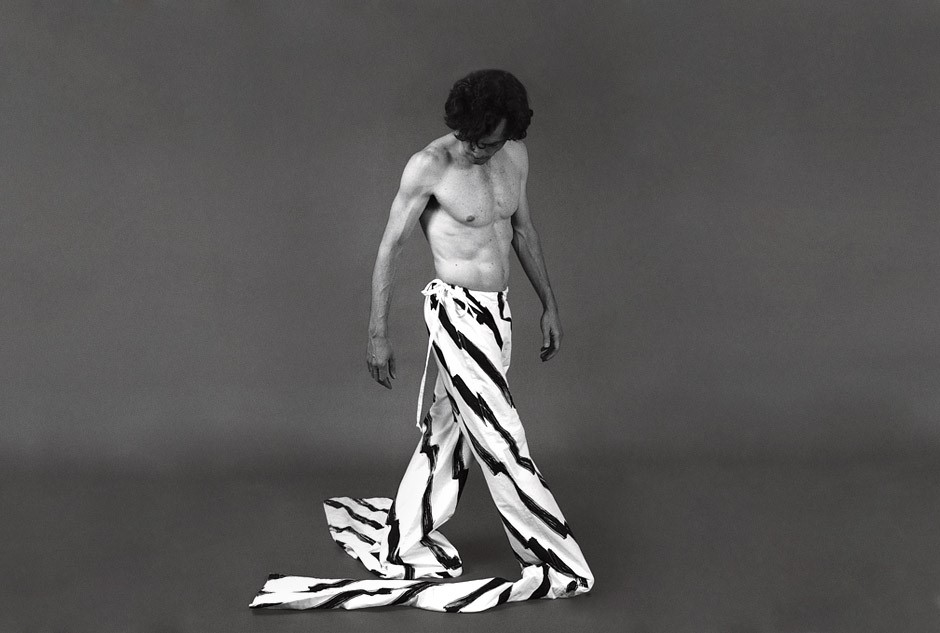Richard Tuttle collaborated with FWM in 1978, and nearly twenty years later in 1998, to create new projects using fabric. During his first residency, Tuttle embraced the hand screen-printing process to make a series of clothing—Shirts in 1978 and Pants in 1979. These projects were the costumes for a dance performance and worn by members of the Pennsylvania Ballet (now the Philadelphia Ballet). Then, in 1998, Tuttle completed the conceptual fashion work The Thinking Cap. This piece was also screen-printed and focuses on connecting to the mind rather than the body. The Thinking Cap rested on another collaborative project, 24, a Minimalist sculptural table made from twenty-four wooden boards.
Tuttle’s kimono work, “Extraordinary”, from his 2014–15 residency, was on view in the major exhibition, Both/And Richard Tuttle Print and Cloth. The hand-sewn yukatas, or summer kimonos, were made of sarashi cloth, a traditional Japanese cotton fabric. There are two editions: one for men and one for women. The design and pattern in this edition were chusen-dyed, a traditional Japanese method of dyeing using stencil paper, by Miyamoto Co., Ltd., in Osaka, Japan. The pattern of the woman’s yukata design is a 90-degree rotation of the man’s design. As Tuttle explained, “By changing the direction of the bars, dynamic energy is achieved.”



